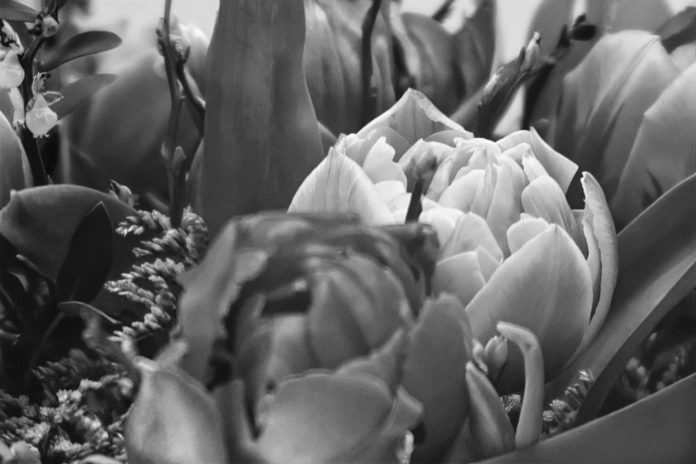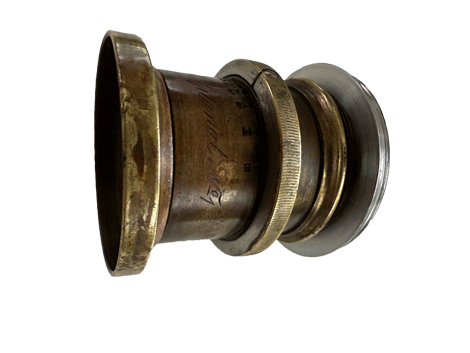Lens overview
“Rapid Aplanat” is the German‑market name for what English makers called the Rapid Rectilinear—a symmetrical lens layout invented independently (and almost simultaneously) in 1866 by Adolph Steinheil (Aplanat, Munich) and J. H. Dallmeyer (Rapid Rectilinear, London). The design pairs two achromatic doublets symmetrically around an aperture, drastically reducing distortion (“rectilinear”) and lateral color compared with earlier single‑element or Petzval types—at much wider apertures (typically f/6–f/8) than the landscape lenses of the 1850s. It became the general‑purpose standard for decades.
The “No. 1” marking is a size designation, not a model year. Among European makers, there was a rough consensus that No. 1 covered a quarter‑plate (~9×12 cm), typically with a focal length in the ~120–140 mm range; you’ll often see examples around 135 mm at f/7.7–f/8 engraved “Rapid Aplanat No. 1.” Coverage grows as you stop down.
Who made them? Many: Steinheil (München), J. H. Dallmeyer (London), Emil Busch A.-G. (Rathenow), E. Suter (Basel), Ross (London), and others. German makers generally used the Aplanat name and published series (e.g., Busch Serie D “Rapid Aplanat” f/8 in multiple focal lengths). At the same time, British‑American catalogs marketed the same optical idea as Rapid Rectilinear.
Build and ergonomics
A brass barrel with a Waterhouse stop slot (earlier) or iris (later), a simple focusing sleeve or rack‑and‑pinion on the host camera, and minimal markings—often a maker’s script, series, f‑number scale, and No. 1 size. The front element typically does not rotate, and the lens is light enough to sit on small field cameras. Here we have a lens with aperture blades, but 1870s–1890s production variants have a slot for drop‑in f-stops. Stop‑down is manual, so you compose at full aperture and insert the Waterhouse stop for exposure.
Optical performance
Sharpness & contrast. Used at its intended working apertures (f/16–f/22), a good No. 1 Rapid Aplanat is surprisingly crisp across a quarter‑plate, with modest field curvature and very low distortion for the period. Wide open (f/6–f/8), expect a gentler look, lower micro‑contrast, and some edge softness—part of the charm for portraits or wet‑plate work. Coverage typically runs ~30° wide open and expands to ~60° by f/22, which is why these small lenses can illuminate formats larger than their nominal plate when stopped down.
Bokeh & rendering. Symmetry and moderate correction give a calm, rectilinear draw without the swirl of Petzvals. Specular highlights are clean; mechanical vignetting is modest on the small sizes.
Flare & CA. Uncoated glass means veiling flare if the sun grazes the front element—use a deep hood/hand flag. Lateral color is well controlled by design; axial color can show in brutal high‑contrast scenes and can be cleaned up by stopping down.
Digital adaptation (today’s bodies)
- Mirrorless experiments. For digital, you can mount a No. 1 on a bellows or helicoid (or add a tube) via a custom flange/board. Expect manual everything; the working distance is generous, and the look is distinctly 19th‑century in backlight.
Release era & naming
- Design debut: 1866 (Steinheil “Aplanat” in Germany; Dallmeyer “Rapid Rectilinear” in Britain), independent inventions with essentially the same 4‑element / 2‑group symmetric formula.
- “Rapid” meaning: compared with earlier f/14–f/16 “landscape” lenses, this Aplanat/RR worked at about f/8, hence “rapid.”
- Series & sizes: makers published Series (A/B/C/D…) and “No.” sizes; No. 1 was a small/quarter‑plate size in many catalogs.
Pricing then & now
Then (c. 1880s–1900): Prices depended on size and maker. As context, a Dallmeyer Rapid Rectilinear 19½‑inch (large size) is priced at £15 in late‑19th‑century British price listings; smaller quarter‑plate sizes (like No. 1) were significantly cheaper, but still a serious purchase for a working photographer.
Now (collectors’ market): Values vary with maker, size, condition, and completeness (stops, flange). Recent examples show:
- Small size No. 1 Aplanats by Suter around €299 retail; Dallmeyer small RRs often $200–300.
- Larger or prestigious pieces (e.g., Dallmeyer 15×12 or 18×16) sell for €400–1000+ at auctions; rare Busch Serie D sizes can fetch more.
Historical & collector context
The Aplanat/RR became the standard lens for general photography from the late‑1860s into the early 20th century—scalable to wide‑angle, “universal,” and long‑focus versions —and remained in production for ~60 years. It was ultimately displaced by anastigmats (e.g., Zeiss Tessar, 1902), which delivered higher uniformity and speed. For collectors, No. 1 lenses are attractive because they’re compact, usable on small field cameras, and appear under many respected names: Steinheil, Dallmeyer, Emil Busch (often “Serie D Rapid Aplanat”), Suter, Ross, etc.
Impressions
Treat a Rapid Aplanat No. 1 as a quarter‑plate standard:
- Use f/16–f/22 for landscapes and architecture; enjoy straight lines and a classic tonal scale.
- Use f/8 for portraits and wet‑plate setups when you want a little soft‑edged glow and shallow depth.
- Always shade the lens—a hat, dark slide, or a handmade hood makes a big difference.
Modern comparison
Against a modern 50 mm Tessar‑type or a contemporary 50 mm prime, the Aplanat has lower contrast with uncoated glass, more flare, and narrower usable full‑aperture coverage—but it delivers a lovely, rectilinear, period-rendering. For a 19th‑century kit at a manageable size, No. 1 is the brilliant sweet spot.
Sample photos
Verdict — Pros & Cons
Pros
- Historic 1866 design with straight‑line rendering and big stopped‑down coverage
- Compact, light brass form (No. 1) for quarter‑plate work
- Early iris aperture blades make exposure repeatable and tactile
- Broad system adoption—many makers, many sizes
Cons
- Uncoated: flare/veiling without a hood
- Sample condition varies (haze/balsam separation); completeness (stops/flange) affects value
- Needs custom mounting for digital experiments








